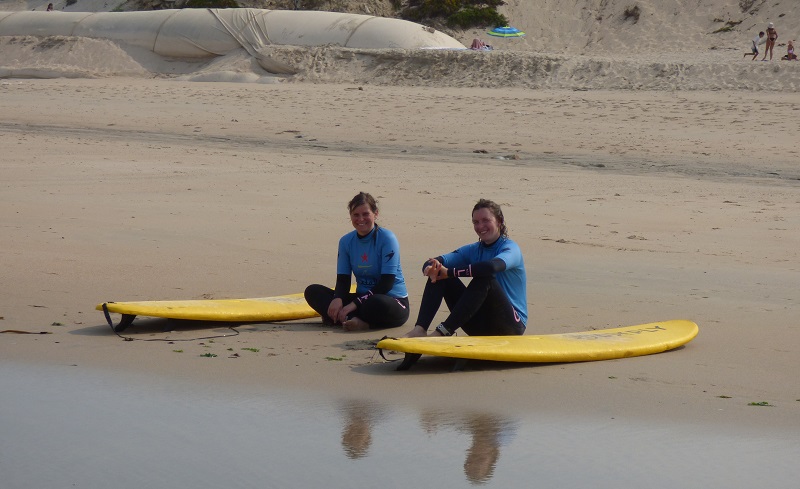
Everyone thinks surfing is just entertainment, and there is only one way to deal with waves. But surfing includes tricks and moves as it is an exciting action sport. Trimming, popping up, duck diving, and paddling are some fundamentals of surfing that you will learn first. Once you are done with the fundamentals, move to the further riding moves with complex waves. Surfers can’t pass to the intermediate degrees without being capable of navigating the surf line and backside turn. So, earlier than doing the greater complicated movements, surfers should enhance their primary browsing skills, educate their footwork, and examine studying the waves. You will look at the list of surf moves and tricks that surfers should know through this post:
Bottom Turn
The bottom turn is where it all starts when it comes to surfing moves. You ensure that the power gathered from the wave is conveyed to your next turn and that the following turn is executed on the correct spot by performing an efficient and timely bottom turn. A poorly executed bottom turn, on the other hand, can result in speed loss and a weak future turn. That is, assuming the foam doesn’t suffocate you. As a result, it’s critical to practice this move in various waves repeatedly. Keep in mind that bottom turns will feel very different depending on the board you are riding and the fin arrangement.
Cutback
In this cutback move, you can simultaneously change the direction and minimize the speed, as it is considered an ideal surfing maneuver. Usually, the waves are unpredictable for beginners, and once you learn how to surf, you can learn about the waves’ unpredictability. It is possible to adjust your board accordingly when the waves shift often. Your shoulder and leg should cooperate properly with the board. You have to move to the vertical side of the wave from the shoulder of the wave’s back. You can press the left rail into the wave by shifting the weight to your back foot and carrying your left hand down. By doing this, you can twist your shoulders and change the directions.
Snap
The next trick, similar to the cutback, is snap, and people should not mix them. Once you find the best Porto surf school with trained professionals, you can learn the snap move easily. Compared with a cutback, this trick is quicker for changing the directions. It is a quick maneuver that allows you to stay in the right location on the wave without losing speed. A layback snap is when you push your board forward while snapping and straighten your back leg on the water. You will be able to perform two tricks at once this way. Snap move is also known as slash.
Foam climb
The foam climb may not appear to be a crucial technique in competitive and intermediate-to-advanced surfing, but it is. Except if you are a rookie, the “soup” is never a good place to be, so understanding how to get out of those mucky circumstances is crucial. The foam climb is one such method and a professional trainer from surf camp Portugal train this well. White water kills the momentum, and the flats aren’t the place to be if you want to hurt your face. When it comes to escaping the whitewater and getting to the next part, your bottom turn and body technique are crucial. To master the skill of the foam climb, the surfer must first navigate a closed-out part, whitewater, or a broken lip.
Air
The Ollie is extremely similar to the air or aerial surfing move. Learning this trick on the water may be easier if you are a skateboarder. When it is about aerials in surfing, the most crucial ability is flight technique. When your surfboard is poised to depart the wave face, it is time to decide. Surfers can catapult themselves out of the water and into the air before landing on the wave’s face again, making it one of the most popular surfing tricks. If you want to learn this maneuver, 2-3 foot waves are great since they allow you to launch from the lip effortlessly.
Tail Slide
Consider the tail slip to be a gradual snap. The majority of the setup and techniques are identical to the last example. The primary difference is that you will give your body and board more power and rotation so that the tail may slide down the wave face – typically by 180 degrees. In small to medium-sized waves, tail slides operate best on top of the pocket or a disintegrating section of the face. A low stance, similar to the snap, aids the turning motion. Use your gaze to direct the board once more.
Final words
Remember that certain waves are better suited to different types of surfers. Therefore, these are just a few of the moves you can learn. It is always best to join a surf school and learn any moves and tricks professionally.